6 marketing attribution and predictive analytics platforms your organization should consider
These platforms can provide marketers with valuable insights into how to better allocate their resources.
With marketers facing increasing pressure to demonstrate the value of the budget they’re allocated for programs, marketing attribution and predictive analytics solutions are tailor-made for proving how tactics and media channels contribute to the bottom line. Using sophisticated proprietary algorithms to blend different types of data, these platforms can provide marketers with valuable insights into how to better allocate their resources.
Below you will find a list of 6 notable vendors that we profiled in the latest MarTech Intelligence Report on marketing attribution and predictive analytics tools.
These vendors are on the front lines of dealing with changes to privacy regulations and technology shifts, so they are building solutions with the strength to weather a cookie-less future where users are in control of their own data. In cases where the so-called walled garden companies (Facebook, Google, Apple and Amazon) are in possession of the data marketers need to evaluate efficacy, marketing attribution and predictive analytics companies often have forged relationships to help their clients penetrate these closed systems.
These solutions aren’t inexpensive, however, and if your business isn’t spending considerable dollars in both digital and traditional marketing channels, you may not realize the amount of savings or additional return that you need to justify the cost of the technology.
Here is our list, which is organized alphabetically and not in any order of importance. For information on pricing and a deeper feature breakdown, download the MarTech Intelligence Report.
Full Circle Insights
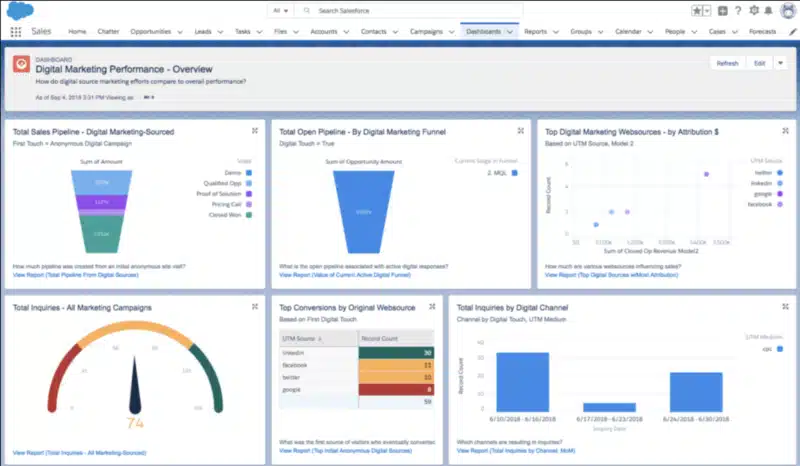
Founded in 2010 by former Salesforce executives, CRM implementation veterans and marketing automation specialists, San Mateo, California-based Full Circle Insights employs around 25 people. Built 100% on the Salesforce platform, Full Circle Insights offers multi-touch attribution, comprehensive funnel metrics and lead management technology.
Target customers
The company primarily targets CMOs, growth and demand generation executives and marketing operations
executives within B2B companies. Key customers include Integrate, TripActions and Okta.
Product overview
Full Circle Insights’ Campaign Attribution product helps marketers optimize their marketing mix and pinpoint which campaigns generate pipeline and revenue results. Built-in customizable multi-touch attribution models allow marketers to get comprehensive attribution metrics across all their data.
The platform provides companies with weighted influence models to help businesses understand impacts on revenue based on a company’s unique data. It is native within Salesforce, so companies can drill further down into the data.

Know how your customers interact with your advertising today and into the future. Explore the platforms essential to predictive analytics and marketing attribution in the latest edition of this MarTech Intelligence Report.
Marketing Evolution

New York-based Marketing Evolution helps enterprise marketers get the most from their marketing
spend through the company’s marketing performance operations SaaS platform and its separate services. The company serves its customers by providing marketing and media performance measurement, attribution and optimization. Founded in 2013, the company has 90 employees. In addition to its NYC headquarters, the company has offices in Sacramento, California and Australia.
Target customers
The company targets enterprise marketers across verticals. Its typical customer spends at least $5 million on paid
media annually. It serves both U.S. and international customers. Key clients include State Farm Insurance, CitiGroup, Lexus, Regions Bank and Optus.
Product overview
Marketing Evolution’s product platform is a closed-loop marketing performance system with three connected components:
- Data intake of asynchronous data into a normalized data store.
- Machine learning to extract market response of media impressions by audience, tactic, and creative exposures.
- A sophisticated UI. The UI has modules including dashboard insights, media reporting (contribution, efficiency, and ROI), attribution reporting (touchpoint credit to conversions at the consumer id level), and media planning (scenario-based optimizations).
MRP Prelytix
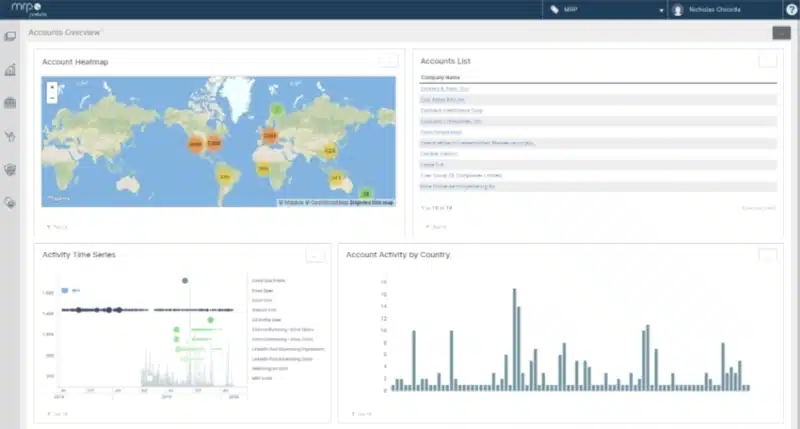
Market Resource Partners, known as MRP, was founded in 2002 and is a subsidiary of First Derivatives, PLC, a publicly traded company. The Philadelphia-based company has 11 global offices, with execution across 100 countries.
Target customers
MRP Prelytix is an enterprise-class predictive ABM platform. It is marketed to technology, finance, healthcare and manufacturing organization. MRP Prelytix empowers sales and marketing teams to simplify their environment’s complexity and produce measurable and high-performance conversion, pipeline velocity, and closed revenue. Key clients include Dell, Oracle, Cisco, SAP, Infor and HPE.
Product overview
MRP Prelytix is designed to shorten the time from the identification of a piece of relevant ABM data, to the execution of the highest value marketing response, and to do this at scale, globally.
The platform consumes 1.5 trillion data signals per month, from client sales and marketing technology integrations to global newsfeeds and billions of pages on the open web. These data signals are honed into actionable insights using streaming analytics technology, Kx. With advanced AI and machine learning capabilities, clients can use the platform to create and test and deploy their own predictive analytic algorithms.
MRP Prelytix connects insights to omnichannel orchestrated actions using the client or built-in delivery infrastructure. Clients can create automated triggers and orchestration responses that can be delivered to as many as eight channels.
Neustar
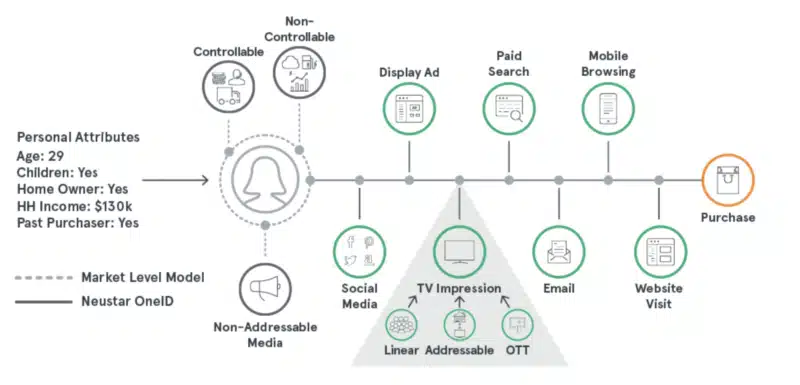
Founded in 1996, Sterling, Virginia-based Neustar is an information services and technology company and a leader in identity resolution providing the data and technology that enable trusted connections between companies and people at the moments that matter most. Neustar offers solutions in marketing, risk, communications, and security
that responsibly connect data on people, devices, and locations, continuously corroborated through billions of transactions It was officially acquired by Golden Gate Capital and GIC on August 9, 2017, making Neustar a privately-held company. Neustar has 2,000 employees and serves more than 8,000 clients worldwide.
Target customers
The company primarily targets enterprise clients across all major industries, including automotive, financial
services, telecommunications, entertainment, retail, restaurants, travel, hospitality and consumer goods. Key clients include Citigroup, Allstate, Macy’s, Ford Motor Company.
Product overview
Neustar Unified Analytics is an end-to-end marketing analytics solution that provides both cross-platform and user-level measurement across all on- and offline channels including the “walled gardens.” This enables advertisers to make critical, on-the-fly optimizations to their marketing mix, campaign tactics, and audience targets to maximize their return on ad spend (“ROAS”).
Advertisers employ Neustar solutions to make strategic decisions about how to set and allocate their marketing budgets across channels.
The tool also helps marketers understand the impact of reach, frequency, and customer overlap on campaign ROI and to develop effective audience-level optimizations.
Nielsen Attribution
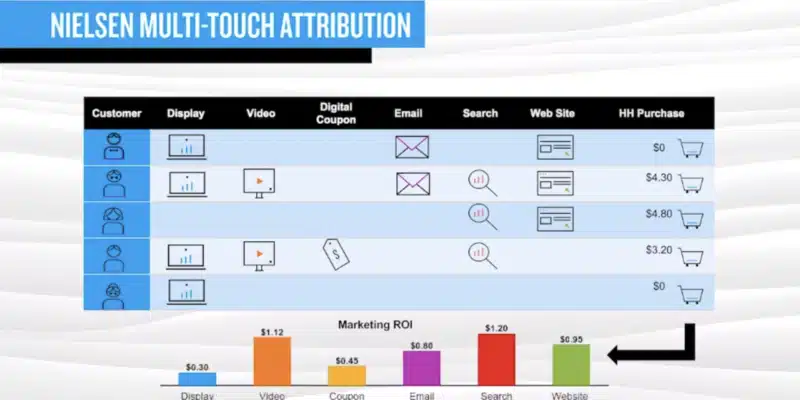
Founded in 1923, New York-based Nielsen Holdings is a global measurement and data analytic company that provides a complete and trusted view available of consumers and markets worldwide. Nielsen is divided into two business units: Global Media and Global Connect. Nielsen Global Media provides media and advertising industries
with reliable metrics that create a shared understanding of the industry required for markets to function. With more than 46,000 employees, Nielsen has operations in over 90 countries, covering more than 90% of the world’s population.Nielsen has invested heavily in recent years in strategic acquisitions such as Exelate, Pointlogic, Visual IQ, and Gracenote. It has also forged relationships with key publishers and strategic partnerships for access to syndicated outcomes datasets to improve data collection for clients.
Target customers
Nielsen serves a variety of stakeholders in the media industry from advertisers to agencies to publishers. Solutions meet the needs of brands of various sizes and budgets and Nielsen has extensive experience in almost every industry with a notably strong background with advertisers in CPG, apparel/retail, tech/telco, financial services,
insurance, and auto as well as publishers.
Product overview
Nielsen Attribution was designed to address the specific needs of digital: refreshed as frequently as daily, modeled at the most granular level, and actionable through automated integrations into media buying platforms. Its person-level attribution empowers digital marketers with a tactical tool to accurately optimize their marketing and media performance across channels and devices in-flight. It complements and is unified with the strategic insights derived from media mix modeling (MMM) by providing a frequent assessment of the impact of every single keyword, display creative, paid social placement, or any other digital tactic within a digital customer journey, on a conversion event.
Clients who invest in TV advertising can evaluate the impact of their TV buys with the same level of granularity as digital, leveraging syndicated purchase data from Nielsen’s partnerships.
Salesforce Datorama
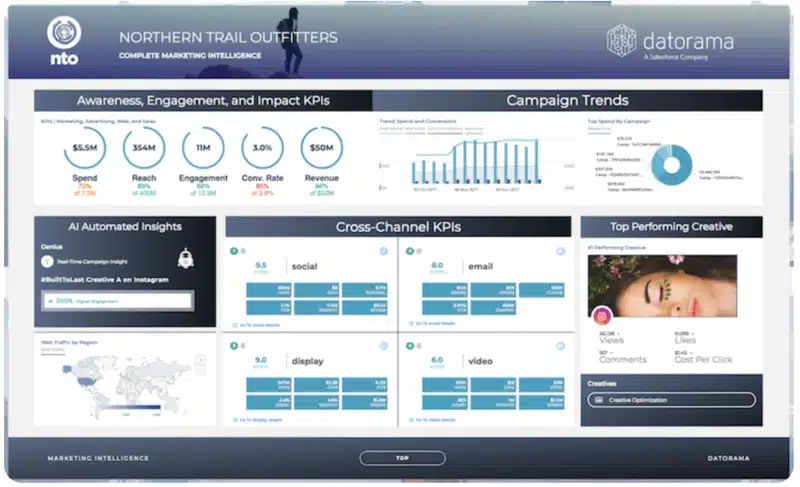
San Francisco-based Salesforce was founded in 2007 but it purchased Datorama in 2018. It has offices in more than 30 countries, though it’s Datorama division is based in New York.
Target customers
Salesforce targets marketing analytics buyers, CMOs and marketing decision-makers across brands, agencies and publishers. Key clients include Cummins, Land O’Lakes, Twitter, Marriott, Pernod Ricard and Ticketmaster.
Product overview
Datorama offers an expansive library of 150+ API connectors that automatically interpret and classify marketing data, as well as other types of data like sales, weather, economic or survey information. Together, they capture all campaign and interaction data from any source — including Salesforce Marketing Cloud, Google Analytics and many more, such as paid and organic search and social, display and video advertising, programmatic, television and offline data. From there, Datorama surfaces insights about different marketing campaigns that can be visualized in dashboards and apps. Marketers and their agencies can customize the dashboard based on their KPIs and audience segments, which will signal AI-powered Einstein recommendations and critical alerts.
With one single system of record, marketers can align and collaborate across teams to ensure everyone is working off of the same set of facts and toward shared goals.
Marketing attribution and predictive analytics: A snapshot
What it is. Marketing attribution and predictive analytics platforms are software that employ sophisticated statistical modeling and machine learning to evaluate the impact of each marketing touch a buyer encounters along a purchase journey across all channels, with the goal of helping marketers allocate future spending. Platforms with predictive analytics capabilities also use data, statistical algorithms and machine learning to predict future outcomes based on historical data and scenario building.
Why it’s hot today. Many marketers know roughly half their media spend is wasted, but few are aware of which half that is. And with tight budgets due to the economic uncertainty brought about by the COVID-19 pandemic, companies are seeking to rid themselves of waste.
Attribution challenges. Buyers are using more channels and devices in their purchase journeys than ever before. The lack of attributive modeling and analytics makes it even more difficult to help them along the way.
Marketers continuing to use traditional channels find this challenge magnified. The advent of digital privacy regulations has also led to the disappearance of third-party cookies, one of marketers’ most useful data sources.
Marketing attribution and predictive analytics platforms can help marketers tackle these challenges. They give professionals more information about their buyers and help them get a better handle on the issue of budget waste.
Read Next: What do marketing attribution and predictive analytics tools do?
MarTech is owned by Semrush. We remain committed to providing high-quality coverage of marketing topics. Unless otherwise noted, this page’s content was written by either an employee or a paid contractor of Semrush Inc.
Related stories